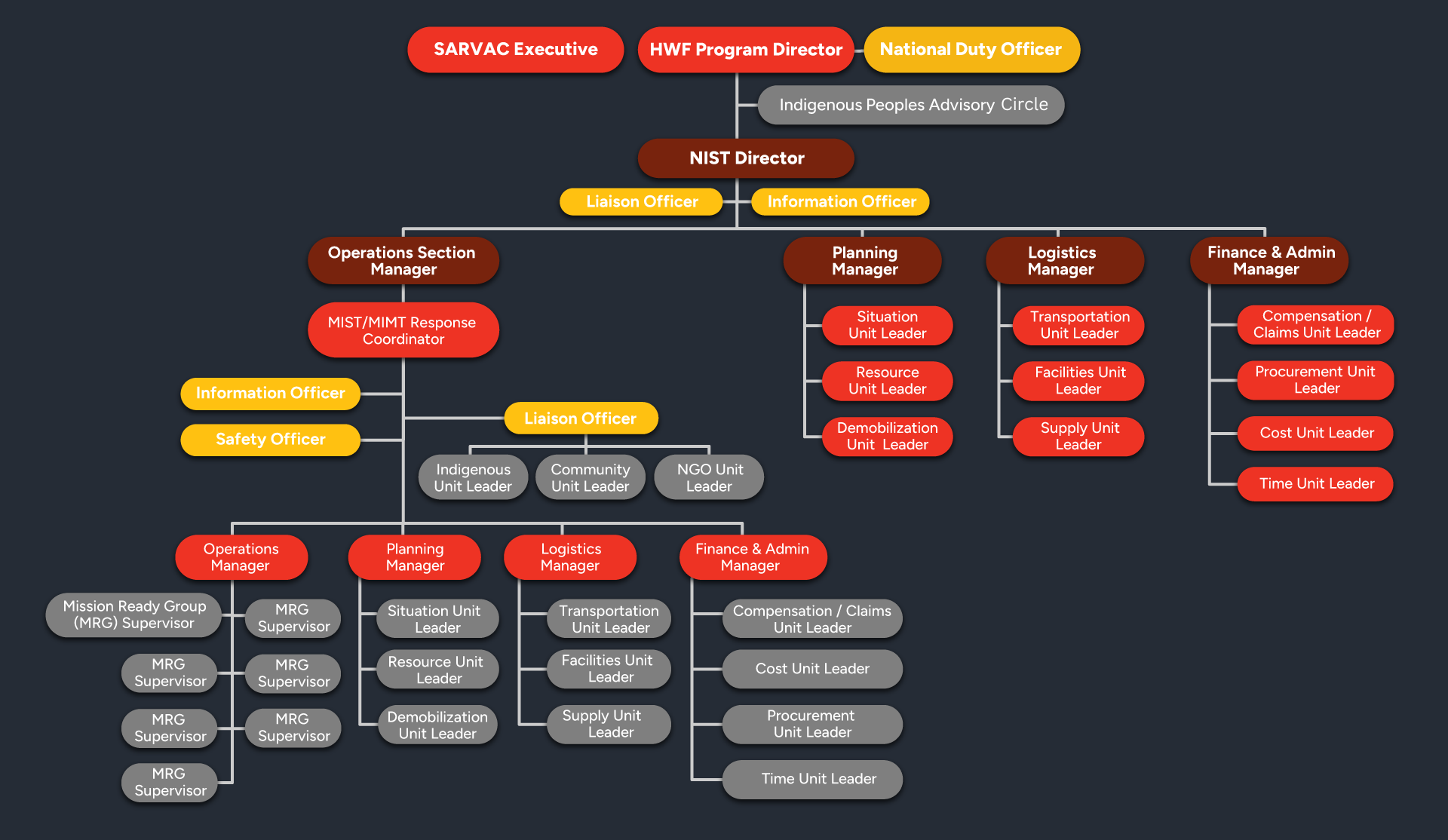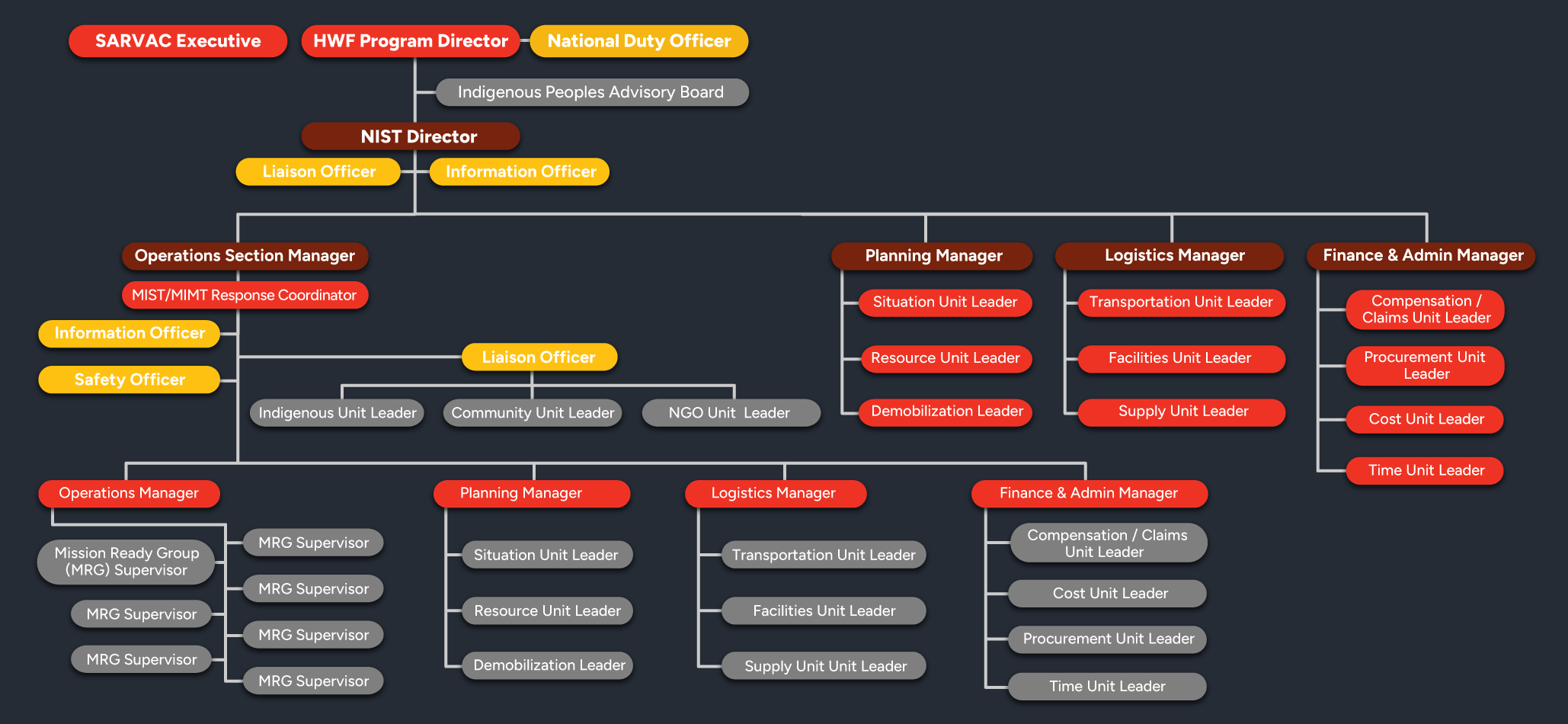HWF Organizational Chart
SARVAC has adjusted its governance structure to incorporate the HWF Program to ensure transparency to its members and guidance and direction to the community.
The National Incident Support Team (NIST) provides support to the mission from a national level, assisting with planning, coordination, and logistics. This team is responsible for providing strategic direction, liaising with external organizations, and ensuring that the mission is aligned with the overall goals and objectives of the SARVAC HWF.
The Mission Incident Support Team (MIST), on the other hand, is responsible for providing direct support to the response and recovery activities on the ground. This team works closely with local authorities and other organizations to assess needs, coordinate resources, and provide assistance to those affected by the incident. They are often the first responders on the scene and play a critical role in ensuring that the response is effective and efficient.
Within each team, there are various operational areas that volunteers may be assigned to, depending on their skills and expertise. These operational areas include but are not limited to: search and rescue, communications, logistics, medical support, and incident command. Each area plays a critical role in the response efforts, and volunteers are trained to carry out their duties effectively and efficiently.
By organizing operations into these two teams and various operational areas, SARVAC HWF is able to respond quickly and effectively to emergencies and disasters across Canada, providing much-needed support to those affected by the incident.
Click image below for larger view.

